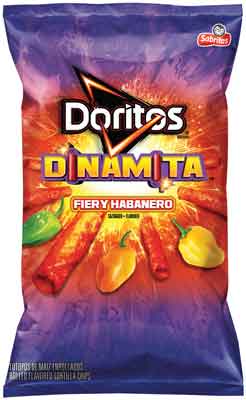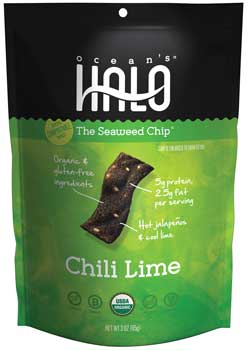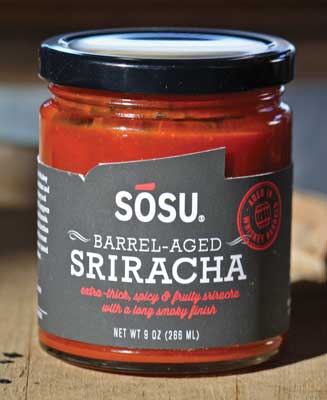Top 5 Flavor Trends
Flavorists, chefs, and trendspotters predict the leading flavor trends that consumers will be seeking out in the coming year on their quest for healthier and more authentic food.

Flavor is the No. 1 driver for all food purchases. It doesn’t matter how many marketing dollars are behind a product or if an award-winning chef made the dish. If it doesn’t taste good, you can bet the customer won’t be coming back for more. The good news is that today what people deem as tasty and are willing to try is broader and more diverse than ever before. According to market researcher Mintel, 57% of Americans consider themselves adventurous eaters and 82% are open to trying new flavors (2014).
Gone are the days when people learned about new flavors and ingredients solely from cookbooks. Instead, social media and cooking television channels, such as Food Network, allow people to see what chefs are trying and what their friends are eating. The new “foodie” movement has shifted from a niche group of restaurant aficionados to nearly three-fourths of all American adults finding themselves interested in food and food culture discussions (Mintel, 2014). As consumers become more educated about food, they desire new experiences that can be found by trying new flavors and cuisines.
As technology expands people’s reach to all parts of the world, different cultures and ethnicities are also coming closer to home. The increase of Hispanic and Asian citizens in North America has created an American population that is moving to a majority-minority composition. As this happens, the interest in ethnic foods, and particularly lesser known regional flavors, grows.
While consumer demand for new and interesting flavor profiles can be challenging to product developers, it also offers an abundance of opportunities. Having a unique flavor is a great way to differentiate a product from the competition. In addition, flavor translates to more than just a tasty product; flavor can carry with it other attributes that consumers desire. For example, coconut water has become increasingly popular because of its health halo as a source for natural hydration and electrolyte replenishment. Because of its popularity, manufacturers are introducing the ingredient into other product categories. “The continued rise in popularity of coconut water and the industry’s ability to create more mainstream appeal for this beverage by infusing it with flavors like chocolate, mango, and other tropical blends has given a boost to coconut as a flavor across many other food and beverage categories,” explains Lisa Demme, Marketing Director, Beverage Business Unit, FONA International.
Health and wellness is just one of the macro trends in the food industry today. Another one that is top of mind for consumers is authenticity. When looking to fill the product development pipeline, manufacturers need to keep their finger on the pulse of these and other macro trends because they directly shape and impact flavor developments. With insight from numerous flavor companies, chefs, trendspotters, and market research companies, here are five flavor trends—sweet + heat; sour, bitter, and tangy; umami; smoke and oak; and Middle Eastern/North African—to watch in 2015 and the drivers pushing each flavor toward mass market appeal.
--- PAGE BREAK ---
Sweet + Heat
According to Technomic’s MenuMonitor data, “spicy” flavors are increasingly appearing on restaurant menus. In fact, more consumers today than in 2011 indicate that they enjoy spicy flavors (2013). “In the United States, the increasing level of interest in hot and spicy will keep spreading into every food category, including drinks, with chipotle, jalapeño, and the incumbent habanero,” predicted Mariano Gascon, Senior Technical Director for New Products and Innovation at Gold Coast Ingredients Inc.
 The snacks category is already seeing the proliferation of spicy flavor introductions, due in part to the Millennials combined love for snacking and bold flavors. In February 2014, Frito-Lay debuted Doritos Dinamita Fiery Habanero Rolled Tortilla Chips to address this growing need for spicy snacks. It is expected that new and increasingly hotter chili varieties will be explored as product developers seek to carve out a niche in the spicy/heat category. However, manufacturers are also realizing that today’s adventurous consumers demand more depth and complexity in flavors. “Sweet and spicy flavors have been trending over the past few years in the snack category, but we see it starting to gain in the beverage sector with drinks such as spicy Mexican hot chocolate and jalapeño margaritas,” said Christopher Spontelli, Marketing Manager, Ottens Flavors.
The snacks category is already seeing the proliferation of spicy flavor introductions, due in part to the Millennials combined love for snacking and bold flavors. In February 2014, Frito-Lay debuted Doritos Dinamita Fiery Habanero Rolled Tortilla Chips to address this growing need for spicy snacks. It is expected that new and increasingly hotter chili varieties will be explored as product developers seek to carve out a niche in the spicy/heat category. However, manufacturers are also realizing that today’s adventurous consumers demand more depth and complexity in flavors. “Sweet and spicy flavors have been trending over the past few years in the snack category, but we see it starting to gain in the beverage sector with drinks such as spicy Mexican hot chocolate and jalapeño margaritas,” said Christopher Spontelli, Marketing Manager, Ottens Flavors.
Mel Mann, Director of Flavor Innovation at Wixon, sees the flavor combination spreading to more categories. “Sweet heat keeps building in various product categories, like chili pepper blends with strawberries as a spread. Contrasting flavors are meeting a growing consumer interest to get multiple experiences from a single food,” said Mann.
Perhaps this explains the current obsession with sriracha—the Thai hot sauce made from chili peppers, sugar, garlic, distilled vinegar, and salt. While the condiment obviously possesses heat from the chilies, it is sweeter than typical American hot sauces, adding a complexity that has fascinated millions. Similar to the allure with bacon, sriracha is now being used as an unorthodox flavor enhancer for everything from snack food to candy and alcohol (CCD Innovation, 2014).
In the coming years expect to see different varietals of chilies paired with flavors such as citrus (lemon and lime), herbs, sweet, and tangy. “Today’s consumer is seeking out new multiple sensory taste experiences,” said Anton Angelich, Group Vice President, Marketing, Virginia Dare. “Fruit flavors combined with cooling or heat sensations can deliver new unique sequential taste experiences. This can be seen nowadays in ready-to-drink beverages, cocktails, confections, and fruit salsas.”
Ingredient manufacturers are already getting on board. At the June 2014 IFT Food Expo, Kalsec launched its Fusionary Heat line. These products, which include Tangy Sweet Ginger, Spicy Orange, Herbal Jalapeño, and Sweet-Roasted Chipotle, combine heat (pungency) with nontraditional pairings such as savory, sour, sweet, and tangy.
Drivers: Many Americans first encounter spicy heat flavors in various ethnic dishes, so it makes sense that the authenticity they seek in ethnic flavors carries through to a chili varietal or spicy condiment. Also, seeing the specific varietal of a pepper in the ingredients list or on the label may seem more authentic and present a “cleaner” label than if they were to see a chemical-sounding name. In addition, research is continually being conducted on the health benefits of certain spice ingredients, which, among other benefits, may boost metabolism.
--- PAGE BREAK ---
 Sour, Bitter & Tangy
Sour, Bitter & Tangy
“Sourness to the extreme appears to continue growing in popularity as consumers experience it from ethnic dishes as well as candies, fruit blends, pickled foods, etc.,” said Mann. One of the main ethnic dishes that has contributed to this growing fondness for sour flavors is kimchi. Made by salting and preserving fermented cabbage in a bed of pepper, garlic, ginger, and scallions, kimchi has benefitted from a newfound interest in that old-time practice of fermenting or preserving food that is currently sweeping the United States. While many foods and beverages rely on fermentation—such as yogurt, beer, and cheese—consumers are beginning to desire the slightly bolder, tangier, and bitter fermented flavors.
It should come as no surprise then to find out that sriracha is made from fermented chili peppers. According to McCormick & Co.’s Executive Chef Kevan Vetter, “sriracha will become what chipotle is now,” opening the door for new fermented spicy flavors. Vetter believes gochujang—a pungent fermented Korean condiment made from red chili, rice, fermented soybeans, and salt—could be the “new sriracha sauce.”
Also associated with fermentation, “the vinegar flavor is beginning to make waves in beverages with kombucha growing rapidly,” said Tom Vierhile, Datamonitor’s Innovation Insights Director. “And we are just beginning to see the first Japanese-style vinegar drinks.” Kombucha is made by fermenting tea with sugar, bacteria, and yeast. The resulting liquid contains vinegar, B vitamins, and a number of other chemical compounds.
“I think fermented products will continue to expand beyond kimchi, sauerkraut, and kombucha as chefs experiment more with fermenting fruits and vegetables as a way to achieve a specific flavor profile,” predicted Kristy Del Coro, Senior Culinary Nutritionist at Rouge Tomate and SPE Certified.
Pickling is another aspect of this trend, which is being showcased especially on restaurant menus. New types of pickles and new flavor combinations signal that the craft pickling industry is here to stay. Whether through vinegar or natural (lactic acid) fermentation, pickles are appearing on more dishes and in a greater number of retail offerings (Packaged Facts, 2014). While the pickled flavor has already been appearing in potato chips and crackers, product developers should consider translating this flavor to new categories.
Bitter flavors are familiar to some cultures, such as Korea and Italy, but they remain relatively unexplored in North America. However, with a surge in the popularity of craft beers; dark chocolate; coffee; greens like arugula, dandelion, radicchio, and frisée; high-quality olive oil; and cocktails made with Campari and absinthe—all foods and drinks with elements of bitterness—bitter is entering the spotlight. Fermenting and pickling can sometimes result in bitter flavors, so as these processes reach wider audiences, so too should the familiarity with bitterness.
Drivers: The act of fermentation and pickling relates to multiple macro trends in the food industry today, including authenticity and health & wellness. “Fermented foods have found a rising tide of popularity due to the convergence of this desire for spicier, bolder flavors and a growing focus on global foods that represent authentic preparations,” said David Sprinkle, Research Director, Packaged Facts (2014). It brings to mind an older type of food processing that consumers may find more acceptable to modern processing technologies. Additionally, there is a health halo surrounding fermented foods whose probiotics are said to aide in digestive health.
--- PAGE BREAK ---
 Umami
Umami
Umami—the fifth basic taste—is hardly new. In fact, Japanese chemist Kikunae Ikeda proposed umami as a separate, distinct taste evoked by glutamic acid in 1908. It wasn’t until 2000 that the L-glutamate taste receptor, taste-mGluR4, which regulates the so-called “firing” of taste-receptor cells, was discovered. The complexity of umami and perhaps its inability to be exactly defined in flavor terms has kept it just out of reach for the general consumer. However, with the popularity of different Asian cuisines and fermented flavors—both of which are rich in umami—the fifth taste is now being celebrated by the masses.
“Umami has been a trend topic with chefs for quite a while now, but I think the general consumer ‘foodie’ will begin delving into these flavors too,” said Chef Michael McGreal, Dept. Chair, Culinary Arts Dept., Joliet Junior College.
Most college students are familiar with instant dehydrated ramen noodles, but with Asian noodle shops popping up across the U.S., consumers are rediscovering authentic ramen. At the heart of ramen is the broth that is made by boiling bones in water for a long period of time. The end result is full of umami flavor. Chef Vetter sees this “grown up” ramen coming front and center in 2015 because of its rich umami flavor and customization possibilities.
Usually found in ramen, seaweed is also rich in glutamic acid and is beginning to transition from sushi staple to everyday snack. While nori, a red seaweed that turns black and green when dried, is the most popular of the edible sea vegetables, there are other commonly eaten varieties including kelp, Irish moss, and laver. Manufacturers are beginning to take advantage of seaweed’s umami appeal, low calorie count, and vitamin content by releasing seaweed in snack chips, ground up in granola bars, and as a seasoning for popcorn.
Ramen and seaweed are just two products that are pushing the interest in umami forward. Other ingredients to keep an eye on, according to Packaged Facts, are fermented fish sauce, dried shrimp or shrimp paste, tempeh, and miso (2014).
Drivers: Umami has a lot going for it on the health front. It enables manufacturers to lower the sodium content in formulations, while adding depth of flavor. Autolyzed and hydrolyzed yeast and yeast extracts, hydrolyzed and texturized proteins, and monosodium glutamate are ingredients that can provide the umami flavor experience and enable sodium reduction. Salt of the Earth has released a Umami-Essence Sea Salt, which claims to boost flavor while helping to reduce sodium. The proprietary liquid formula combines tomato extract, which provides the umami taste, and sea salt for a finished product that uses 30% less sodium than table salt. New research also shows that umami may help produce a feeling of satiety.
 Smoke & Oak
Smoke & Oak
Beverages are a good place to explore when looking for new exciting flavors. What you find in craft soda, spirits, and beer today may make their way to snacks and entrée products over time. The popularity of the craft alcohol movement has spurred innovation in flavors and techniques. According to Datamonitor’s Vierhile, “smoked cocktails have been a fad in bars, but we are also seeing the smoke flavor move into categories like hummus, which may be an indication of bigger and better things ahead.” While smoked deli meats and bacon are standards in the grocery store, smoked flavors are now making their way into chips and candy too.
“I think smoke is sort of the next evolution of bacon,” forecasted Katrina Markoff, Founder of Vosges Haut-Chocolat. “At Vosges, we have a smoked banana caramel bar, where we smoke the bananas. And I’m working on a copal resin smoked chocolate. I’m doing smoked sugar, and I’m working on smoked cinnamon for the holiday.”
--- PAGE BREAK ---
 Smoke can add complexity to a flavor that will vary depending on what type of wood or material is smoked. Another technique that imparts a woody flavor and stems from the popularity of the craft alcohol movement is barrel-aged. “I am seeing a lot of smoked flavors, but I think barrel-aged has that same taste profile, while being a little more approachable,” said Christine Keller, Director of Trend Practice at CCD Innovation. Wine and spirits are probably the first things to come to mind when thinking about barrel-aged goods, but you now see everything from barrel-aged beer to barrel-aged sriracha sauce.
Smoke can add complexity to a flavor that will vary depending on what type of wood or material is smoked. Another technique that imparts a woody flavor and stems from the popularity of the craft alcohol movement is barrel-aged. “I am seeing a lot of smoked flavors, but I think barrel-aged has that same taste profile, while being a little more approachable,” said Christine Keller, Director of Trend Practice at CCD Innovation. Wine and spirits are probably the first things to come to mind when thinking about barrel-aged goods, but you now see everything from barrel-aged beer to barrel-aged sriracha sauce.
Manufacturers should also think about imparting the flavors of the specific wood that barrels are made of into their products. “Oak is one of the most interesting flavors to emerge in 2014 in nonalcoholic beverages,” said John Wilson, Marketing Manager at Allen Flavors Inc. “It is interesting that this oak flavor is a crossover to nonalcoholic beverages from aged spirits and wine. We will most likely see more oak flavors and other wood flavors such as cedar and pine in combination with flavors like cranberry, sorrel, and honey in nonalcoholic beverages in 2015.”
Skip Rosskam, David Michael & Co.’s President and COO, was inspired by a trip to Maine and Vermont in which he encountered the barrel-aging process being applied in unexpected ways—such as for maple syrup, olive oil, and alcoholic cider. Now the company is poised to create different barrel-aged flavors, such as “aged in oak” and “aged in new oak.”
Other ingredients are making their way from alcoholic beverages into categories like confectionery. Hops impart a bitter, tangy flavor in beer and can now be found in hard candy. In addition, fernet (a bitter liquor) has been featured increasingly on cocktail menus. “In the upcoming years, as the taste is acquired by consumers, it will move into desserts like ice cream or decadent pastry fillings,” predicted Bridget Schigoda, Consumer Insights Manager at Sensient Flavors. “We already saw this on the dessert menu at Mindy’s HotChocolate in Chicago.”
In addition, the flavors of beer itself are being applied outside of the beverage category. Bell Flavors & Fragrances recently introduced a line of beer flavors, including standard yeasty lager, stout, Belgian ale, and hard dry apple cider. “Bell’s stout beer flavor provides the dark chocolate and fermented molasses aroma and taste associated with a freshly poured stout,” said Kelli Heinz, Director of Marketing and Industry Affairs at Bell Flavors & Fragrances.
Drivers: Smoking and barrel-aging are both traditional methods of processing foods and beverages. Consumers see them both being used in the craft alcohol movement and therefore they strike a chord of authenticity. Adding smoke and barrel-aged flavors to a food or beverage product, and marketing it as thus on the label, will help convey that sense of craftsmanship that is very popular among consumers. Additionally, smoke adds flavor without plumping up the calorie count, allowing consumers to experience more flavor without negative health impacts.
Middle Eastern & North African
Ethnic foods are everywhere. In fact, it could be said that each flavor trend listed here plays out in or is inspired by an ethnic cuisine. “The increased ethnic diversity in the United States is changing America’s taste preferences and has resulted in a blend of cuisines at the dinner table,” said Chef Vetter. “Today, cuisine-specific or ethnic foods account for 44% of all U.S. flavor occasions.”
Among the cuisines infiltrating Americans’ palates is Middle Eastern/North African dishes and flavors. According to Mintel, Middle Eastern menu items have increased at all restaurants since 2011 (2014). Even Subway began testing falafel sandwiches in 2011, giving customers a choice when it came to vegetarian options and ethnic flavors. Street foods like falafel and shawarma are gaining popularity in the U.S., and hummus has become a fundamental snack item. This familiarity opens the door to explore more flavors indigenous to the region.
--- PAGE BREAK ---
“I have noticed more prevalent use of Middle Eastern and North African spices and flavors such as those inspired by Yotam Ottolenghi [an Israeli chef, cookery writer, and restaurant owner]—sumac, za’atar, ras el hanout, coriander, and cardamom,” said Del Coro. Firmenich’s Mikel Cirkus, Global Director of Conceptual Design, agrees. “The dried herb spice blend and sumac condiment, za’atar, continues to be on the rise and is gaining popularity as it moves from the white tables and trending Middle Eastern restaurants to street food and niche cafes,” observed Cirkus.
 Another flavor from North Africa that is becoming more widely known is harissa, which is a blend of roasted red peppers, serrano peppers, and other hot chili peppers with additions of garlic paste, coriander seed, or caraway. “With the popularity of chili peppers these days, we believe the popularity of this flavor is going to peak in 2015,” said Sensient’s Schigoda.
Another flavor from North Africa that is becoming more widely known is harissa, which is a blend of roasted red peppers, serrano peppers, and other hot chili peppers with additions of garlic paste, coriander seed, or caraway. “With the popularity of chili peppers these days, we believe the popularity of this flavor is going to peak in 2015,” said Sensient’s Schigoda.
In particular, Bell’s Heinz sees the Aleppo pepper, which originates from Syria and Turkey, becoming more widely used. “These slightly salty peppers have a moderate heat level that builds slowly with some zesty citrus and mild cumin undertones,” explained Heinz. The pepper is included in Bell Flavors & Fragrances’ new line of pepper flavors, which highlight a variety of global spices.
Drivers: As consumers are exposed to new ethnic cuisines, they start to seek out more regional, bolder, and authentic flavors. This search for authenticity is very important to today’s consumers. It not only translates in their desire to experience authentic ethnic dishes, but also in their need to know exactly what’s in their food. Consumers want to be able to recognize the ingredients and know where they come from. Manufacturers can help convey a product’s authenticity through the use of regional flavors.
Translating Trends to Market
As demonstrated with some of these trends, flavors featured in beverages may filter down to other product categories. “The most flavor innovation seems to be in, and stem from, the cocktail category,” said Cirkus. “Mixologists, by definition, are scientists, bartenders, craftsmen, chefs, and flavorists. They’re truly the closest the consumer can get to sampling right ‘from the lab.’” It is also vital to keep an eye on innovative restaurants. Chefs are always experimenting with flavors, and if they resonate with the diners, the flavors could, in time, find their way to supermarket products.
For product developers looking to introduce one of these new flavors in a packaged food item, it would be wise to consider “testing” them out in a beverage or snack product first. “Snacks are great because they are a low commitment item for consumers. They can buy the curried popcorn or Bombay spiced nuts and try them without spending a lot of money,” said CCD Innovation’s Keller. And given that globally consumers spent $374 billion on snack foods annually between 2013 and 2014, they are always looking for new flavors (Nielsen 2014).
While novel flavors are growing in interest for consumers, it should be noted that often the best-selling flavors remain steady over time. “I’m often asked, ‘What are the big flavor trends?’ My answer is always the same. It’s never changed, nor is it changing anytime soon—chocolate, vanilla, and strawberry, paralleled by cola, lemon lime, and orange,” said Cirkus. “Anything and everything else will come and go, but these are seemingly staples in leading flavor trends.” That being said, while consumers may want chocolate ice cream most of the time, they are increasingly also seeking out new flavors. Perhaps a chocolate chipotle ice cream? If it tastes great and is in line with what consumers are looking for, you may have a winner.
After his presentation on alcohol flavors at a recent Chicago Section IFT dinner, Professor Devin Peterson from the University of Minnesota spoke to Food Technology magazine more about ethnic, umami, and alcohol flavors. Take a look.
Kelly Hensel is Senior Digital Editor of Food Technology magazine ([email protected]).
References
CCD Innovation. 2014. Culinary Trend Mapping Report: A Look Backward & Forward. April. CCD Innovation. www.ccdinnovation.com.
Mintel Group Ltd. 2014. Innovation on the Menu: Flavor Trends – U.S. June. Mintel Group Ltd. www.mintel.com.
Nielsen. 2014. Global Snack Food Sales Reach $374 Billion Annually. Nielsen. www.nielsen.com.
Packaged Facts. 2014. Consumer Interest in Bolder Flavors and Authentic, Global Preparation Converge in Rising Popularity of Fermented Artisanal Foods. Press release, Aug. 21. www.packagedfacts.com.
Technomic Inc. 2013. The Flavor Consumer Trend Report. Technomic Inc. www.technomic.com.


